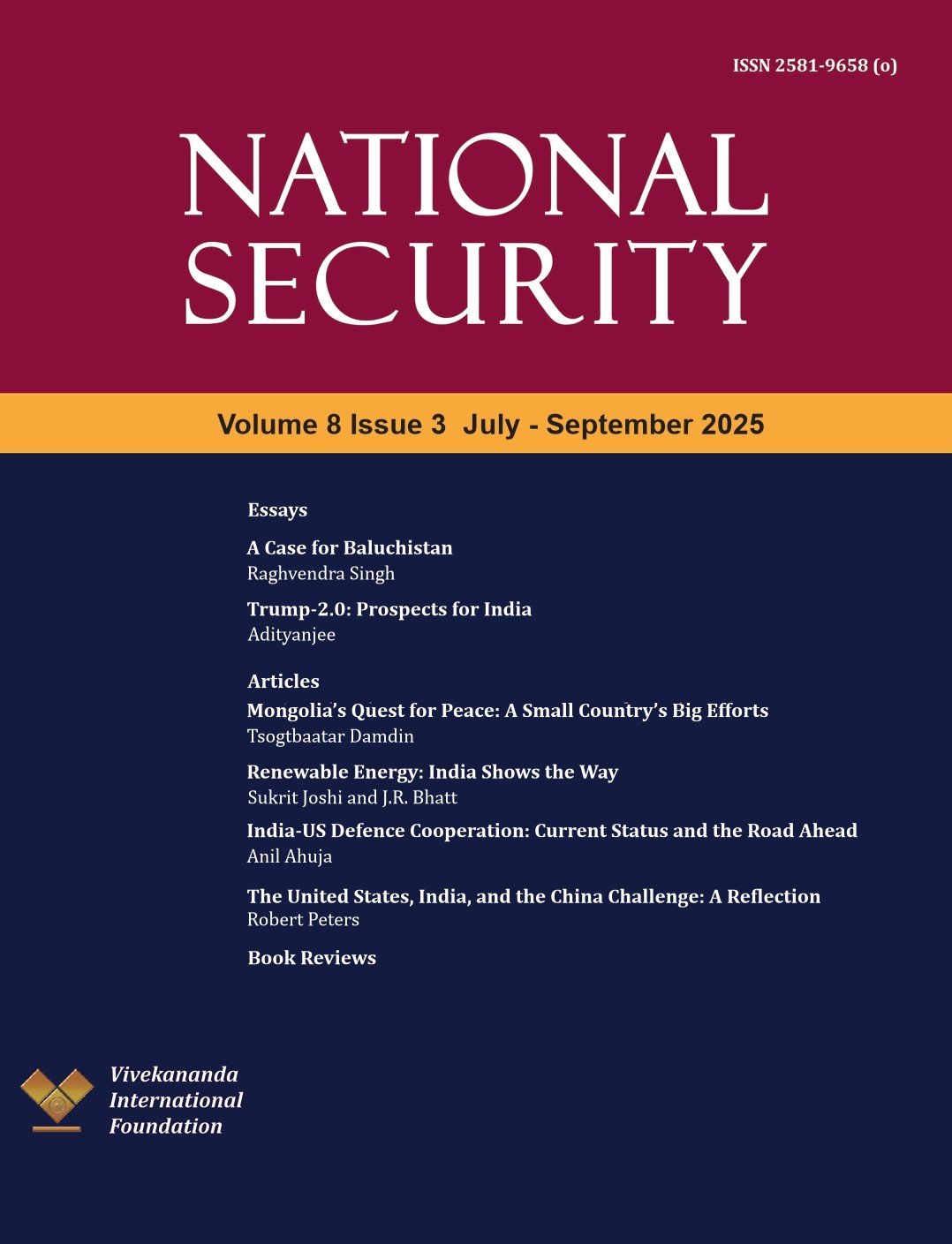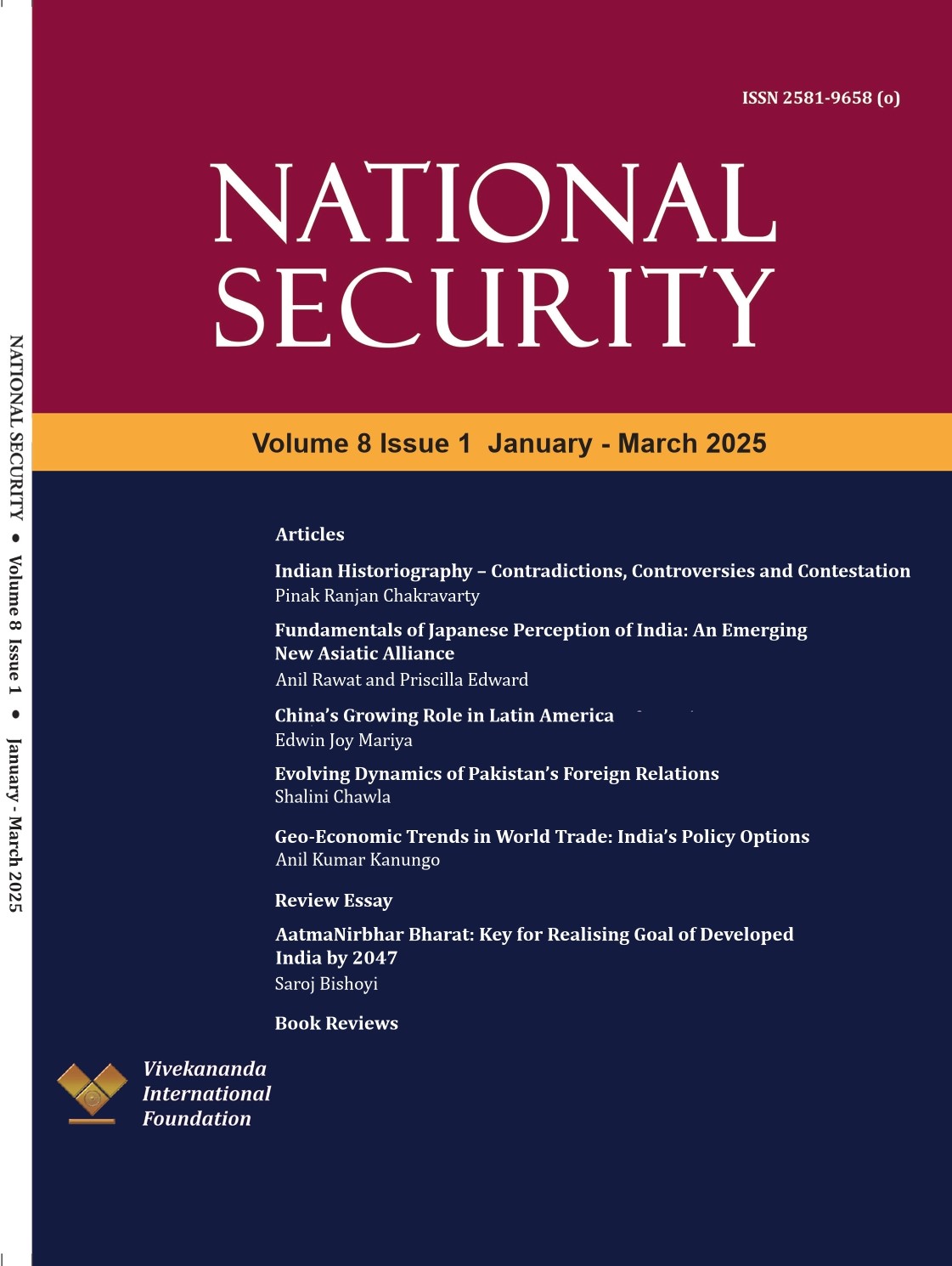National Security
Published in Association with Vivekananda International Foundation
Current Volume: 8 (2025 )
e-ISSN: 2581-9658
Periodicity: Quarterly
Month(s) of Publication: Mar, Jun, Sep & Dec
Subject: Political Science & International Affairs
DOI: 10.32381/NS
Online access is free for the Research Faculty of VIF
Article
Sinicisation and the Threat of Cultural Sinicisation and the Threat of Cultural Sinicisation and the Threat of Cultural Genocide in Tibet Genocide in Tibet
By : Sarada Subhash
Page No: 69-101
Abstract
The Tibetan people and their distinct national identity have been under constant threat since the invasion and occupation of Tibet by China in 1950-51. To understand the extent and magnitude of atrocities against the non-violent Tibetans by China one needs to grasp China’s state policies/programmes that drive the state-led efforts to erase Tibetan national identity. This article argues that Chinese policies of ‘stability-maintenance’, ‘social management’, ‘political re-education programme’, with Sinicisation at their core, are attempts by the CPC to tighten its domestic security and stability in the country in general and its alienated and restive periphery, in particular. Even the so-called development narrative in the Tibetan region is but a pretext by Xi Jinping’s regime to systematically monitor and control any discontent that may arise amongst the Tibetans against the Chinese state. Xi’s Tibetan ‘development plans’ can also be perceived as a Chinese strategy to buy support with the aim to curb disaffection and ensure social stability.
Author :
Sarada Subhash is a Research scholar with the Vivekananda International Foundation (VIF).
She pursues research on Tibet, China’s Foreign Policy, and World Order. The author is deeply grateful to Prof. Sujit Dutta for his valuable inputs and observations on the paper.









